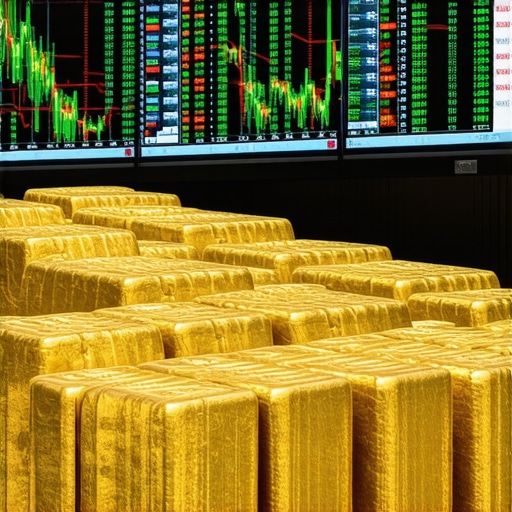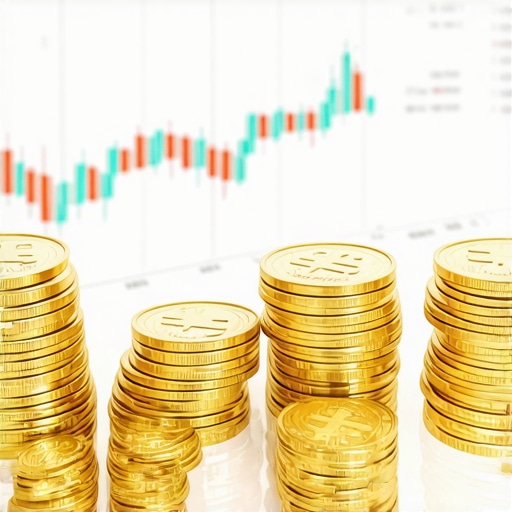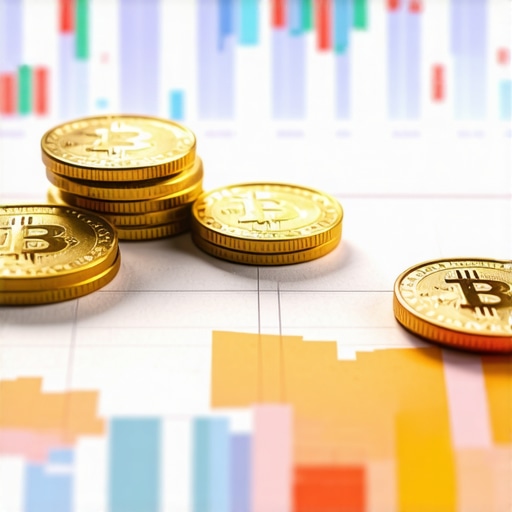Deciphering the 2025 Gold Market: An Expert’s Perspective on Demand Dynamics and Price Catalysts
As we venture into 2025, the gold market stands at a pivotal juncture, shaped by an intricate interplay of macroeconomic factors, geopolitical shifts, and evolving investment paradigms. Drawing upon extensive market analysis and experience, this article dissects the nuanced demand trends and fundamental price drivers poised to influence gold’s trajectory this year. For seasoned investors and industry analysts, understanding these layers is essential for strategic positioning in a complex financial landscape.
Understanding the Evolving Demand for Gold in 2025
Global gold demand remains a multifaceted phenomenon, driven by jewelry consumption, central bank policies, and investment behaviors. Notably, emerging markets continue to propel jewelry demand, fueled by rising income levels and cultural shifts in Asia and the Middle East. Simultaneously, central banks are recalibrating their gold reserves amid a backdrop of economic uncertainty, emphasizing diversification and stability. According to the World Gold Council’s recent report, central bank purchases are projected to increase in 2025, reinforcing the asset’s role as a reserve hedge.
Price Drivers and Market Catalysts in 2025
Several key factors underpin the price drivers for gold this year. Inflationary pressures, driven by global monetary policies, remain a primary concern, prompting investors to seek safe-haven assets. Additionally, geopolitical tensions and supply chain disruptions contribute to volatility, often resulting in gold price surges. Technical analysis suggests that gold’s price is approaching critical support and resistance levels, indicating potential breakout scenarios. Furthermore, the rise of gold ETFs and futures trading offers liquidity and hedging opportunities, influencing short-term price movements.
What are the complex implications of digital asset competition on gold’s market share in 2025?
This evolving landscape raises questions about the competition between traditional gold investments and digital assets like cryptocurrencies. While digital assets offer liquidity and technological innovation, gold remains a tangible, historically proven store of value. The competition could reshape demand patterns, especially among younger investors, emphasizing the importance of understanding both asset classes for comprehensive portfolio management.
For investors seeking to maximize returns, strategic allocation considering both physical gold and derivatives is crucial. Exploring advanced trading strategies, such as using futures and options, can mitigate risk and capitalize on market volatility. For detailed insights, consider consulting resources like Maximize Your Gold Returns with Strategic Trading in 2025.
As the market evolves, transparency and due diligence in selecting gold dealers become increasingly vital. Trustworthy sources, verified through industry certifications, ensure the integrity of physical holdings and secure transactions. The future of gold in 2025 is intricately linked to macroeconomic stability and investor confidence, making it imperative for stakeholders to stay informed on market trends and policy shifts.
In conclusion, 2025 presents a complex but promising landscape for gold investors. By understanding demand drivers, price catalysts, and strategic opportunities, stakeholders can position themselves advantageously amid global uncertainties. As always, continuous analysis and adaptive strategies will be key to unlocking gold’s full potential this year and beyond.
Unlocking the Nuanced Role of Gold in Modern Portfolios: A Strategic Perspective for 2025
As global financial markets grapple with unprecedented volatility and macroeconomic shifts, the role of gold as a core asset class warrants deeper analysis. Beyond traditional safe-haven perceptions, gold’s strategic integration into diversified portfolios can be optimized through sophisticated techniques like dynamic asset allocation and risk-adjusted models. Experts advocate for a nuanced understanding of how geopolitical tensions, inflation trajectories, and technological investments—such as gold-backed cryptocurrencies—intersect to influence gold’s market positioning in 2025.
How Can Advanced Portfolio Strategies Leverage Gold’s Unique Attributes?
Innovative portfolio management approaches, including tactical asset allocation, enable investors to adapt to short-term market signals while maintaining long-term stability. Incorporating quantitative models that factor in macroeconomic indicators—like the market analysis 2025 key factors impacting supply and demand—can refine entry and exit points. Moreover, understanding correlations between gold and other assets, such as equities and bonds, allows for more resilient investment configurations, especially in uncertain economic climates.
Could emerging digital assets redefine gold’s market share in the investment landscape of 2025?
This question challenges conventional assumptions about gold’s supremacy as a safe haven. While digital assets like cryptocurrencies offer liquidity and technological innovation, gold’s tangible nature and historical stability provide a counterbalance. As highlighted by recent research, the competition between these asset classes could lead to hybrid investment vehicles, such as gold-backed tokens, blending traditional and digital attributes for enhanced diversification. Investors should evaluate these emerging trends critically, considering both the potential for growth and risks associated with digital asset volatility.
For those seeking a comprehensive understanding of how to adjust their investment strategies, resources such as building a gold investment portfolio for 2025 and beyond offer valuable insights into constructing resilient, adaptive holdings that align with evolving market dynamics.
Furthermore, due diligence remains paramount. Partnering with reputable gold dealers, verified through industry certifications, helps ensure the security and authenticity of physical assets. As market complexity increases, transparency and strategic planning become even more vital for safeguarding wealth and capitalizing on gold’s long-term potential in 2025.
Interested in exploring innovative trading techniques? Consider mastering futures and options strategies, which can serve as powerful tools for hedging against volatility and leveraging market opportunities, as discussed in how to use gold futures technical analysis in 2025. These approaches require a sophisticated understanding but can significantly enhance your investment toolkit.
Stay informed about the latest market trends and policy shifts by following trusted sources, including industry reports and expert analyses, to ensure your investment decisions are well-founded and timely.
Leveraging Gold’s Diversification Potential in Multi-Asset Portfolios for 2025
As the financial landscape becomes increasingly complex, sophisticated investors recognize the importance of integrating gold not just as a safe haven but as a strategic diversification tool. By employing advanced asset allocation techniques such as mean-variance optimization and dynamic rebalancing, investors can enhance portfolio resilience against macroeconomic shocks. Incorporating gold into multi-asset strategies requires a nuanced understanding of its correlation dynamics with equities, bonds, and emerging digital assets, which can be modeled using multivariate statistical techniques like principal component analysis (PCA) to identify optimal hedge ratios.
The Rise of Gold-Backed Cryptocurrencies: A New Frontier in Asset Class Hybridization
One of the most groundbreaking developments in 2025 is the emergence of gold-backed tokens and cryptocurrencies. These hybrid assets combine the liquidity and technological advantages of digital currencies with the tangible backing of physical gold, effectively bridging traditional and modern investment realms. According to a recent report by the CryptoSlate, these instruments are gaining regulatory acceptance in multiple jurisdictions, offering investors new avenues for exposure. Understanding the mechanics of these tokens—such as their collateralization, redemption process, and the legal frameworks governing them—is essential for integrating them effectively into diversified portfolios.
How do gold-backed tokens impact the liquidity and volatility profile of gold investments?
By providing near-instant liquidity and fractional ownership options, gold-backed tokens can reduce entry barriers and improve market depth. However, their volatility often mirrors that of the underlying digital asset market, which can introduce additional risk factors. Proper due diligence, including analyzing the collateralization standards and issuer credibility, is critical. Academic research, such as that published in the Journal of Financial Markets, suggests that these tokens can function as efficient hedging instruments when managed within a well-structured risk framework.
For investors eager to explore innovative allocation strategies, consulting expert analyses like building a resilient gold portfolio for 2025 and beyond can provide valuable insights into integrating these emerging assets seamlessly.
Advanced Hedging Techniques Using Gold Derivatives to Navigate Market Volatility
In turbulent markets, traditional buy-and-hold strategies may fall short. Sophisticated investors turn to derivatives such as gold futures, options, and swaps to hedge against short-term price swings and long-term macroeconomic risks. By employing delta-neutral strategies, investors can lock in gains or limit downside exposure while maintaining exposure to gold’s fundamental attributes. The use of volatility surface modeling—analyzing implied volatility across strike prices and maturities—enables traders to craft nuanced hedging positions that respond dynamically to market signals.
Particularly, the application of exotic options like barrier options and Asian options allows for tailored risk mitigation, which can be invaluable during geopolitical upheavals or inflation spikes. Detailed knowledge of these instruments and their pricing models, such as the Black-Scholes framework adjusted for commodity-specific factors, is vital for effective implementation.
Considering these advanced techniques, resources like how to master gold futures technical analysis in 2025 serve as essential guides for traders seeking to elevate their risk management toolkit. Staying informed through industry reports, regulatory updates, and expert webinars ensures that investors remain agile in leveraging derivatives to protect and grow wealth amid evolving market conditions.
Harnessing Blockchain for Gold Authentication: Elevating Security and Transparency
As technological advancements reshape asset management, integrating blockchain solutions into gold trading and storage offers unprecedented levels of security, transparency, and efficiency. By decentralizing record-keeping, blockchain ensures tamper-proof provenance tracking, which not only mitigates fraud but also enhances investor confidence. Industry leaders are increasingly adopting blockchain-based certificates of authenticity, streamlining the verification process and reducing reliance on centralized authorities.
For instance, platforms like the Gold Blockchain Consortium exemplify how digital ledgers can revolutionize physical gold transactions. These innovations facilitate real-time auditability and fractional ownership, expanding accessibility for retail investors and institutional players alike. Embracing such systems can significantly mitigate counterparty risks and foster a more resilient gold ecosystem.
What role do geopolitical shifts play in shaping gold’s strategic importance in 2025?
Geopolitical tensions, trade disputes, and regional conflicts continue to influence gold’s status as a safe-haven asset. Countries recalibrating their foreign reserves often prioritize gold accumulation, especially amid currency devaluations or sanctions. According to the IMF’s recent report, nations are diversifying reserve portfolios to include more tangible assets, underscoring gold’s strategic role in national security and economic stability.
This geopolitical landscape underscores the importance for investors to monitor international relations and policy shifts closely. Incorporating geopolitical risk assessments into asset allocation models can enhance portfolio robustness against unexpected shocks.
How can institutional investors leverage gold derivatives for sophisticated risk management?
Institutional players increasingly utilize derivatives like options, swaps, and futures to fine-tune exposure and hedge against volatility. Advanced strategies such as calendar spreads and volatility arbitrage enable precise risk mitigation, especially during turbulent macroeconomic periods. For example, employing gold options with varying strike prices and maturities can lock in downside protection while retaining upside potential.
Furthermore, integrating delta-hedging techniques allows for dynamic adjustment of positions in response to market movements, optimizing risk-adjusted returns. Academic research, notably in the Journal of Financial Markets, highlights how derivatives can serve as critical tools for institutional portfolio resilience, especially when market correlations fluctuate unpredictably.
Exploring the Environmental, Social, and Governance (ESG) Dimensions of Gold Investment
With increasing emphasis on sustainable investing, ESG considerations are transforming gold procurement and valuation. Responsible sourcing initiatives, such as the Responsible Gold Mining Principles, promote environmentally conscious and ethically sound extraction practices. Investors integrating ESG metrics into their due diligence processes can better assess the long-term viability and societal impact of their holdings.
Moreover, innovations in recycled gold and environmentally friendly mining methods are gaining traction, aligning gold investment with broader sustainability goals. Understanding these dimensions not only enhances risk management but also aligns portfolios with evolving regulatory and societal expectations.
What strategic insights can be gained from market sentiment analysis and sentiment-driven trading algorithms?
Advanced analytics and artificial intelligence enable real-time sentiment analysis, transforming qualitative market perceptions into actionable signals. Machine learning models process news feeds, social media chatter, and geopolitical developments to gauge market mood, providing investors with a competitive edge.
Sentiment-driven algorithms, when calibrated with traditional technical and fundamental indicators, can execute trades with high precision, exploiting short-term volatility and trend reversals. As highlighted in the Quantamagazine, integrating sentiment analytics into trading frameworks enhances adaptability and responsiveness, critical in a rapidly evolving gold market landscape.
Engage with the latest strategic insights—empower your gold investment decisions for 2025 and beyond
To stay ahead in this complex environment, investors and analysts must continuously explore innovative tools, monitor geopolitical developments, and leverage cutting-edge technology. Partnering with industry experts, utilizing advanced analytics, and embracing sustainable practices will be pivotal for optimizing gold’s role in diversified portfolios. Dive deeper into these themes by consulting specialized resources and collaborating with trusted financial advisory firms dedicated to navigating the nuances of the 2025 gold market.
Expert Insights & Advanced Considerations
1. Diversification Beyond Traditional Assets: Leveraging Gold-backed Digital Innovations
Experts emphasize the importance of integrating emerging gold-backed cryptocurrencies and tokens into diversified portfolios. These hybrid assets combine the stability of physical gold with the liquidity of digital assets, offering new avenues to hedge against macroeconomic risks and inflation.
2. Strategic Use of Derivatives for Risk Management
Utilizing complex derivatives such as options, swaps, and futures enables sophisticated investors to fine-tune exposure and protect against volatility. Mastering these tools allows for dynamic hedging strategies that respond effectively to market shifts, especially amid geopolitical tensions and monetary policy changes.
3. Incorporating Blockchain for Transparency and Security
Blockchain technology is transforming gold trading by providing tamper-proof provenance tracking and fractional ownership. This innovation enhances trust and reduces counterparty risks, making gold investments more secure and accessible globally.
4. Geopolitical Monitoring as a Market Driver
Staying attuned to geopolitical developments remains critical. Countries’ strategic gold reserve accumulation influences prices and market stability. Advanced risk assessment models that incorporate geopolitical shifts can provide a competitive edge.
5. ESG Factors Shaping Long-term Gold Investment
Responsible sourcing and sustainability practices are increasingly impacting gold valuation. Integrating ESG metrics ensures compliance with evolving regulations and aligns portfolios with societal expectations, fostering resilience in the long term.
Curated Expert Resources
- World Gold Council: The premier authority offering comprehensive market reports, demand analysis, and policy insights essential for expert-level understanding.
- CryptoSlate: A leading source for emerging trends in gold-backed cryptocurrencies, providing detailed reports on innovations and regulatory developments.
- Journal of Financial Markets: An academic journal featuring rigorous research on derivatives, hedging strategies, and market dynamics relevant to advanced investors.
- IMF Reports: Authoritative publications on geopolitical risks and their macroeconomic impacts, crucial for strategic risk assessment.
- Responsible Gold Mining Principles: Guidelines and standards that ensure ESG compliance, enabling long-term sustainable investment planning.
Final Expert Perspective
In 2025, the gold market is increasingly shaped by technological innovation, strategic derivatives use, and geopolitical considerations. Advanced investors recognize that integrating gold-backed digital assets and blockchain transparency enhances portfolio resilience. Mastering complex hedging techniques and monitoring ESG factors will be pivotal for long-term success. To deepen your expertise, explore resources like the building a resilient gold portfolio for 2025 and stay informed on market trends through authoritative reports. Engaging with these insights ensures a sophisticated approach to gold investment, positioning you ahead in this dynamic environment.










